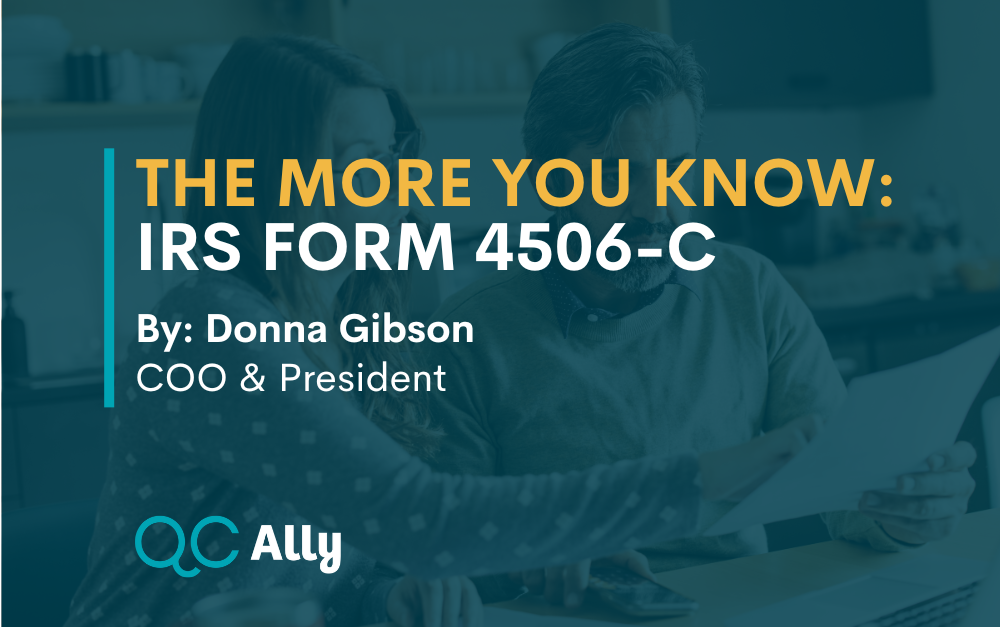The More You Know: IRS Form 4506-C
By: Donna Gibson, COO and President of QC Ally
In one of my roles at QC Ally heading up operations, I work with our client partners during onboarding. In this capacity, I see processes and procedures vary greatly from client to client. It is important to work with each other and share how to adequately comply with the regulations mandated industry-wide for Quality Control (QC). After several decades in the QC space, I have tremendous compassion for our clients and understand the burden they bear – often this is why they turn to a great QC partner in the first place. Every day I am very humbled by our client partnerships and very grateful they chose us, QC Ally! This month, I want to share one of the most misunderstood GSE regulations — the requirements around IRS Form 4506-C during post-closing QC audits.
Did you know you must submit a correctly completed and signed copy of Form 4506-C to the IRS during the post-closing QC process for loans selected for QC review if it is a Fannie Mae or Freddie Mac loan? And this goes for every loan selected as mentioned for post-closing QC with only a few exceptions:
- For both Freddie Mac and Fannie Mae: Lenders that obtain the appropriate IRS transcripts ahead of closing do not have to re-order in post-closing.
- Fannie Mae: When all of a borrower’s income was validated by the DU validation service, you do not have to order transcripts in post-closing.
- Freddie Mac: When all of the borrower’s income is validated from a third-party service provider designated by Freddie Mac or from a Freddie Mac financial institution verification report, you do not have to order transcripts in post-closing.
And – worth mentioning again – the form must be filled out correctly and signed during the origination process. Otherwise, if selected for post-closing QC, you will have to go back to the borrower for a new form, which bears the risk of decreasing customer satisfaction and adds to the already short audit QC timeline.
Needless to say, this is only the requirements of ONE FORM. The moving pieces from origination to post-close all must work in unison to ensure an effective and efficient QC process is in place. If the proper steps are not taken, you expose yourself to the possibility of increased future auditing at a minimum. I believe we would all agree, the least amount of Fannie Mae or Freddie Mac audits we go through, the better it is!
Your Options
Some of our client partners submit the form during the origination process so that they are covered in post-closing regardless of if the file is pulled in post-closing. That said, this is understandably an expense some would rather not make on the front-end on every loan.
If you are in that boat, no problem. Just ensure you are coordinating with your teams during origination and post-close so that the form is properly filled out and signed before closing AND ensure your QC team knows to submit the form to the IRS if the loan is selected for auditing. Also, for any forms that can’t be processed, ensure your process for working with origination to correct the forms at closing is documented and contained in your QC Plan.
For more information, don’t hesitate to reach out:


